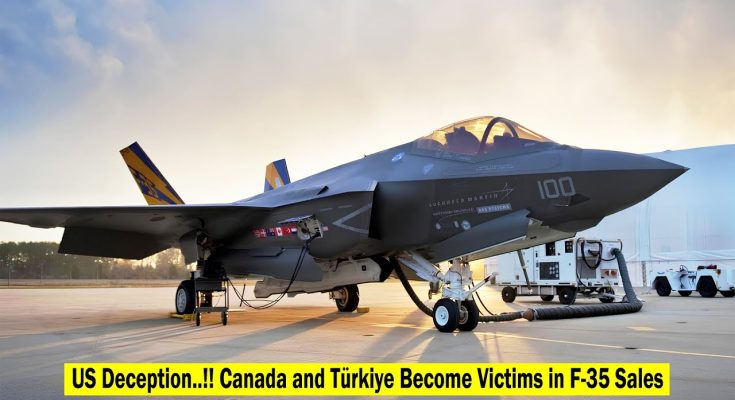Turkey and Canada Fall Victim to U.S. Foul Play in F-35 Sale!
The F-35 Lightning II, the world’s most advanced multi-role stealth fighter, has been at the center of political tensions and controversial arms deals. While many U.S. allies have acquired the aircraft, Turkey and Canada found themselves sidelined, allegedly due to political maneuvering and economic pressures from Washington.
Both nations initially planned to operate the F-35 but later faced delays, restrictions, and cancellations, leading to frustration, financial losses, and strategic shifts in their air forces. But was this just business—or a deliberate act of U.S. foul play?
Turkey’s F-35 Fallout: A Billion-Dollar Betrayal
Turkey was one of the original partners in the F-35 program, investing over $1.4 billion into its development. The Turkish defense industry was manufacturing key components for the fighter jet, expecting to receive at least 100 F-35s for its air force. However, things took a dramatic turn when Turkey purchased the Russian S-400 missile defense system in 2017.
🔹 U.S. Retaliation: The U.S. argued that the S-400 posed a security risk to NATO and the F-35 program.
🔹 Expulsion from the F-35 Program: In 2019, Washington banned Turkey from receiving its jets and removed Turkish firms from production contracts.
🔹 Economic and Military Losses: Turkey lost billions in expected defense exports and was forced to seek alternatives, including the TF-X Kaan, its own stealth fighter project.
Despite Turkey’s strategic NATO membership, the U.S. chose to punish Ankara, leading many to question whether Washington was using the F-35 as a geopolitical weapon rather than a military asset.
Canada’s F-35 Saga: Political Games and Delays
Canada, another long-time U.S. ally, was also heavily involved in the F-35 program, participating as a partner since 1997. The Royal Canadian Air Force (RCAF) planned to replace its aging CF-18 Hornets with F-35s. However, political shifts and U.S. influence delayed the process for over a decade.
🔹 Changing Governments, Changing Deals: Political parties in Canada disagreed on the F-35 purchase, leading to constant reviews and delays.
🔹 U.S. Pressure: Reports suggested that Washington pushed Canada to commit early, despite cost concerns and technical issues.
🔹 Alternative Fighters Considered: Canada delayed its final decision until 2022, ultimately choosing the F-35, but at a much higher price than initially planned.
Many experts believe the U.S. used economic pressure and military dependencies to ensure Canada had no real choice but to stick with the F-35, despite political hesitation.
The Bigger Picture: U.S. Influence Over the F-35 Program
The F-35 isn’t just a fighter jet—it’s a tool of geopolitical control. The U.S. can selectively grant or deny access, ensuring that only nations aligned with its interests get full participation.
✅ Geopolitical Leverage: The U.S. can reward allies or punish those who act independently (like Turkey).
✅ Economic Control: Partner nations pay billions, but Washington retains full control over production and maintenance.
✅ Technological Monopoly: Even approved buyers don’t get full access to software and capabilities, keeping them dependent on U.S. support.
Both Turkey and Canada learned the hard way—the F-35 program is as much about politics as it is about air power.



